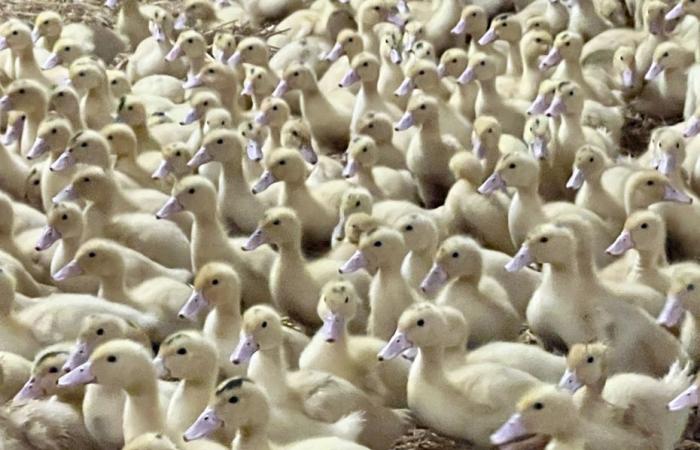Nine Breton farms affected since the end of summer, avian flu is gaining ground, particularly in Brittany. The risk was raised from “moderate” to “high” across the entire national territory on November 9, 2024. This implies greater constraints for breeders, confinement, control and slaughter in the event of infection. .
The essentials of the day: our exclusive selection
Every day, our editorial team reserves the best regional news for you. A selection just for you, to stay in touch with your regions.
France Télévisions uses your email address to send you the newsletter “Today’s essentials: our exclusive selection”. You can unsubscribe at any time via the link at the bottom of this newsletter. Our privacy policy
“We are worried, but not panicked. We must follow the biosecurity advice” reacts Stéphane Rouet, he is a breeder of laying hens in Ambon in Morbihan. A coastal town, which explains why its animals, located in a surveillance zone, have been confined for a month and a half already, especially since its henhouses are only four kilometers from a source of avian flu. “It’s definitely better that they go out, he adds. For them and for us too. This makes it easier to intervene and observe them.”. “In eggs the risk of avian flu is omnipresent, but for duck producers, there are, in addition, impacts on outlets.” continues the Morbihan breeder.
Of the ten farms affected by avian flu since the end of summer in France, nine are located in Brittany. In one week, at the end of October, three outbreaks were detected in Morbihan, in a farm near Vannes, of duck in the foie gras sector, in another of duck in the meat sector and near Pontivy, of laying hens. In view of the acceleration in the spread of the epidemic, the authorities decided to raise the risk level from “moderate” to “high”, the highest level, on November 9, 2024. It had gone from ” negligible” to “moderate”, mid-October, in the face of fears of contamination by wild birds.
Read on the subject: Avian flu. Following the discovery of a new outbreak in Morbihan, the prefect extends the protection and surveillance zone
In the situation of high risk of spread of the virus, poultry are particularly confined in buildings, that is to say that in farms of more than 50 birds, they are “sheltered, and their food and water are protected”. In smaller farms, poultry and birds are “confined or protected by nets”.
If an outbreak is detected, “health police measures are deployed to limit the spread of the virus”, farm animals are slaughtered, or even those located nearby, according to a perimeter defined by prefectural decree, the sites are cleaned and disinfected. In regulated areas, close to outbreaks, surveillance is reinforced, regular screenings, birds are all sheltered, movements are prohibited and hunting of feathered game is restricted.
Read on the subject: “One flight of feathers is enough to spread the disease.” The return of avian flu worries duck breeders
A vaccination campaign, possible only on ducks, began at the beginning of October, it is the second of its kind. France, which is the first country in Europe to vaccinate large scale to protect its farmslaunched a first campaign in 2023 on farms with more than 250 animals. Since October 1, 4 million ducks have been vaccinated against highly pathogenic avian influenza (HPAI).
The whole of Europe is affected by avian flu, the virus has thus been detected in 24 countries, with the number of outbreaks increasing, especially in Hungary. In France, however, it is Brittany, which is the most concerned. The region, where the first outbreak was detected in August, is in fact on a bird migration corridor. And these arrived later this year due to the mild temperatures. It is also the period of silage on farms, which attracts large numbers of gulls and gulls to the fields, wild animals, which can carry the virus.
In the latest bulletin on the situation of the epidemic, it is indicated that the multiplication of cases and outbreaks in France, confirmed “a strong infection dynamic has been present since the end of September and is increasing among wild birds, including migrants, in active migration corridors upstream of France. The risk of introduction into France of viruses of HPAI from migratory wild avifauna is already important.”






